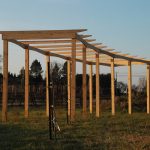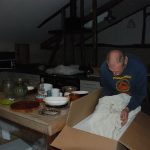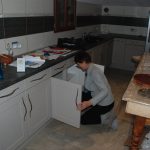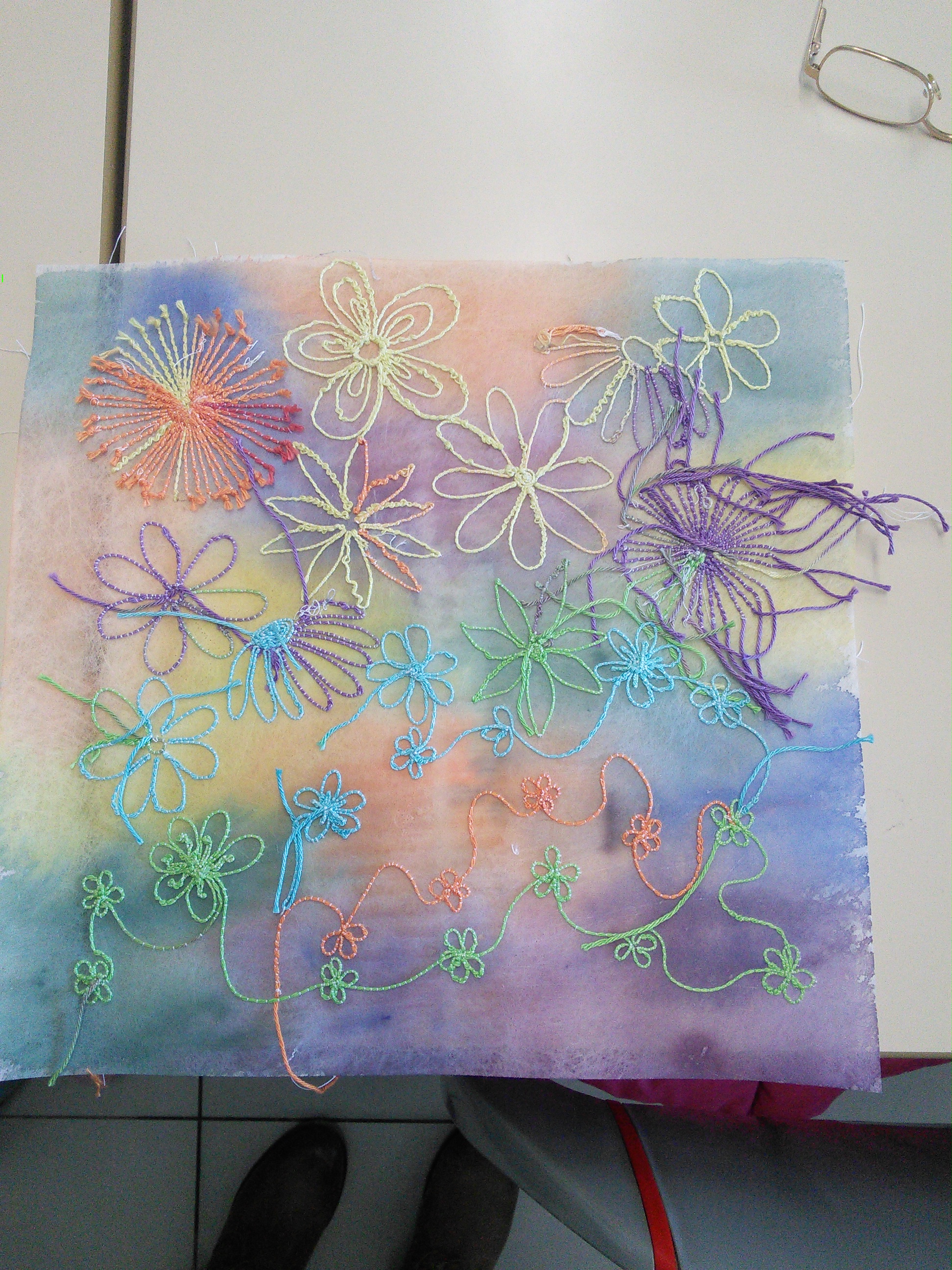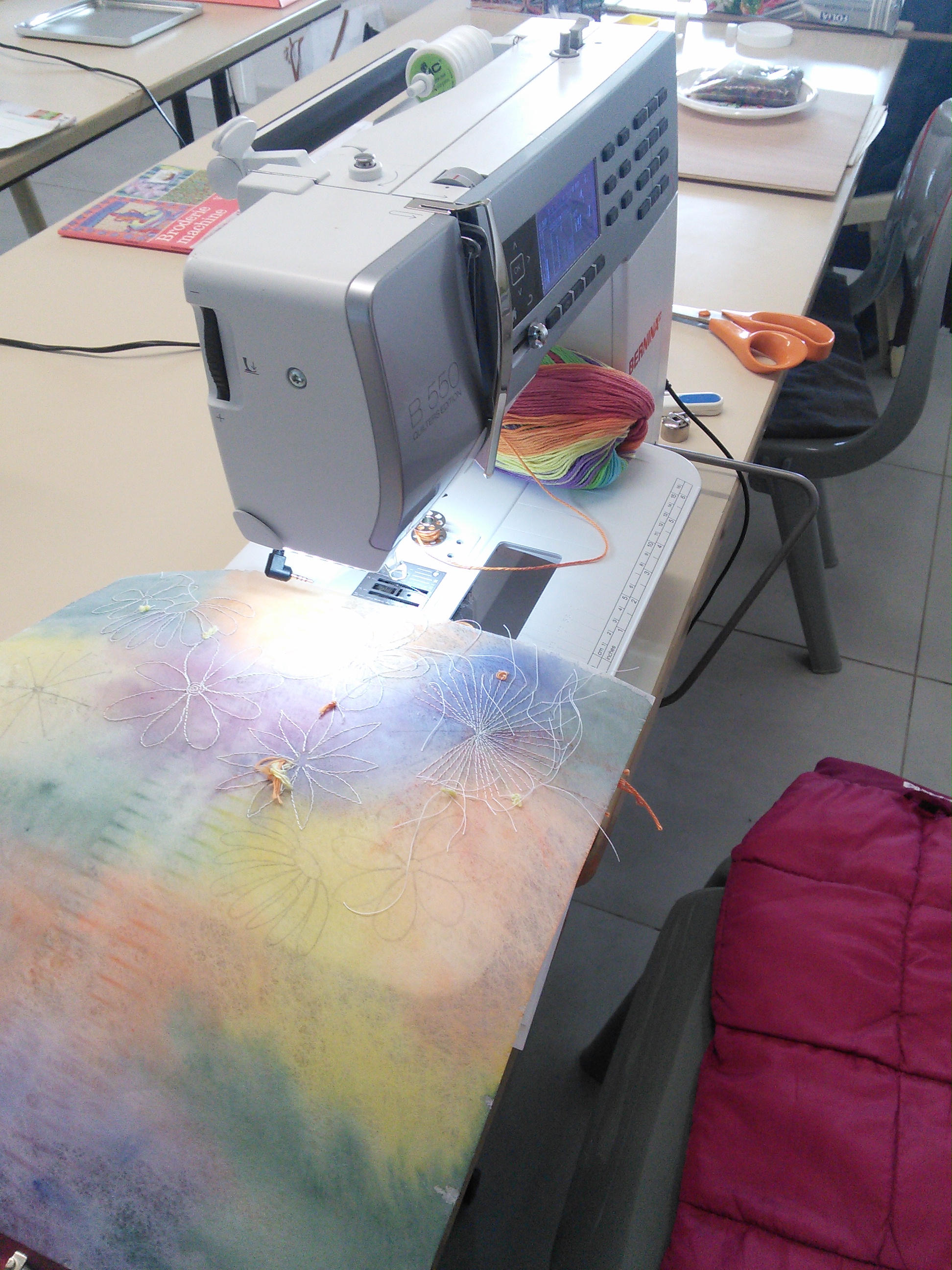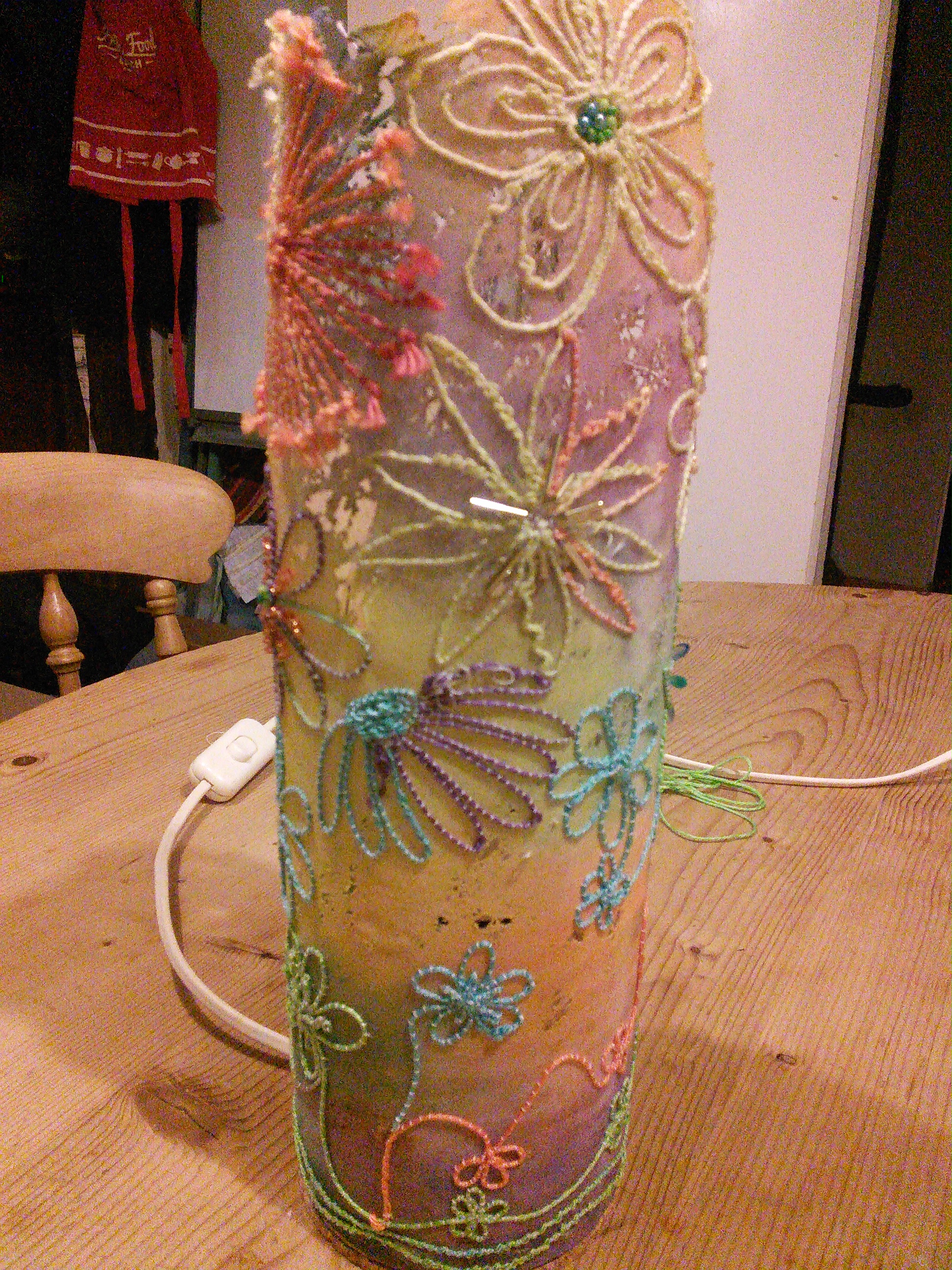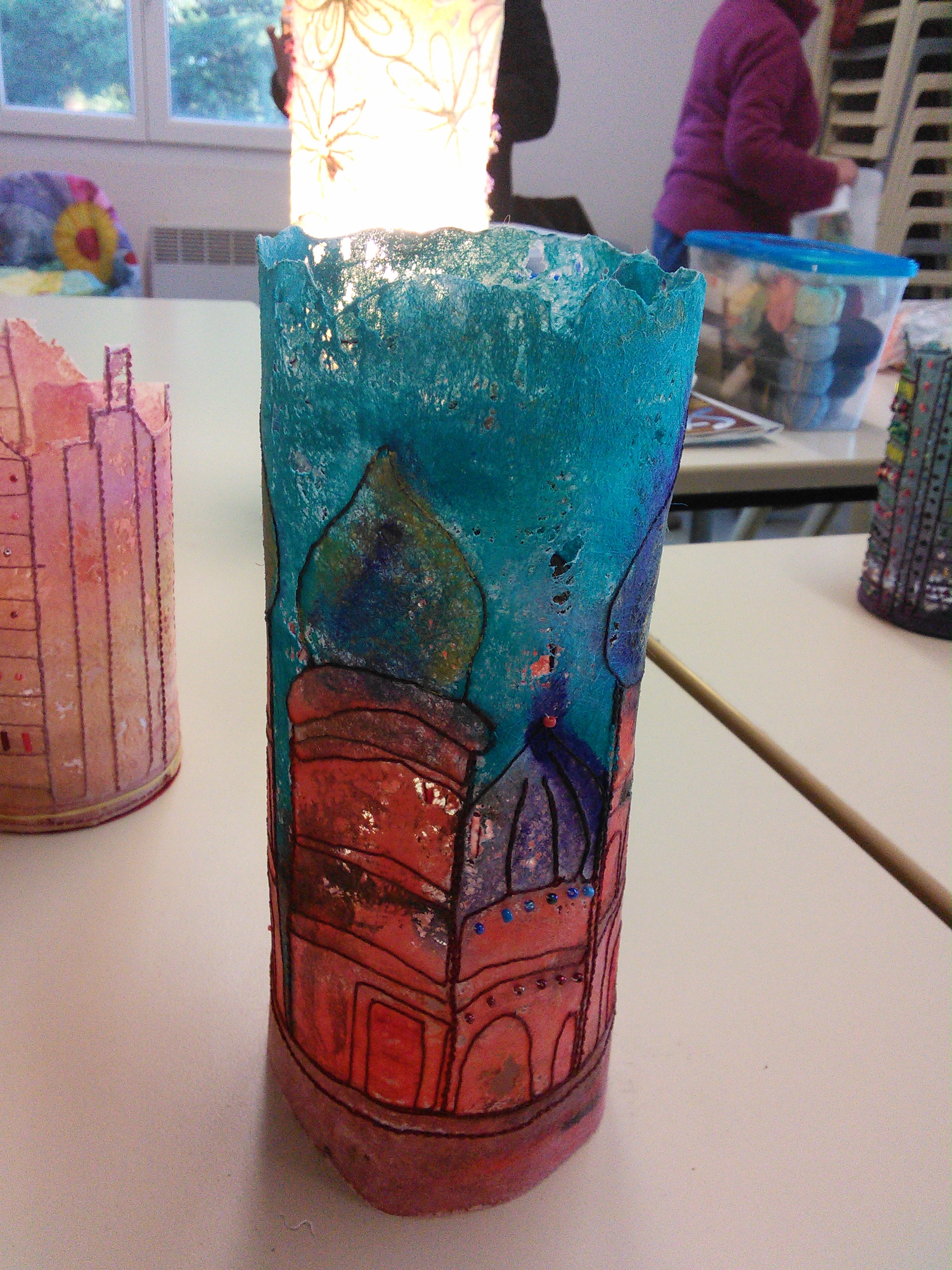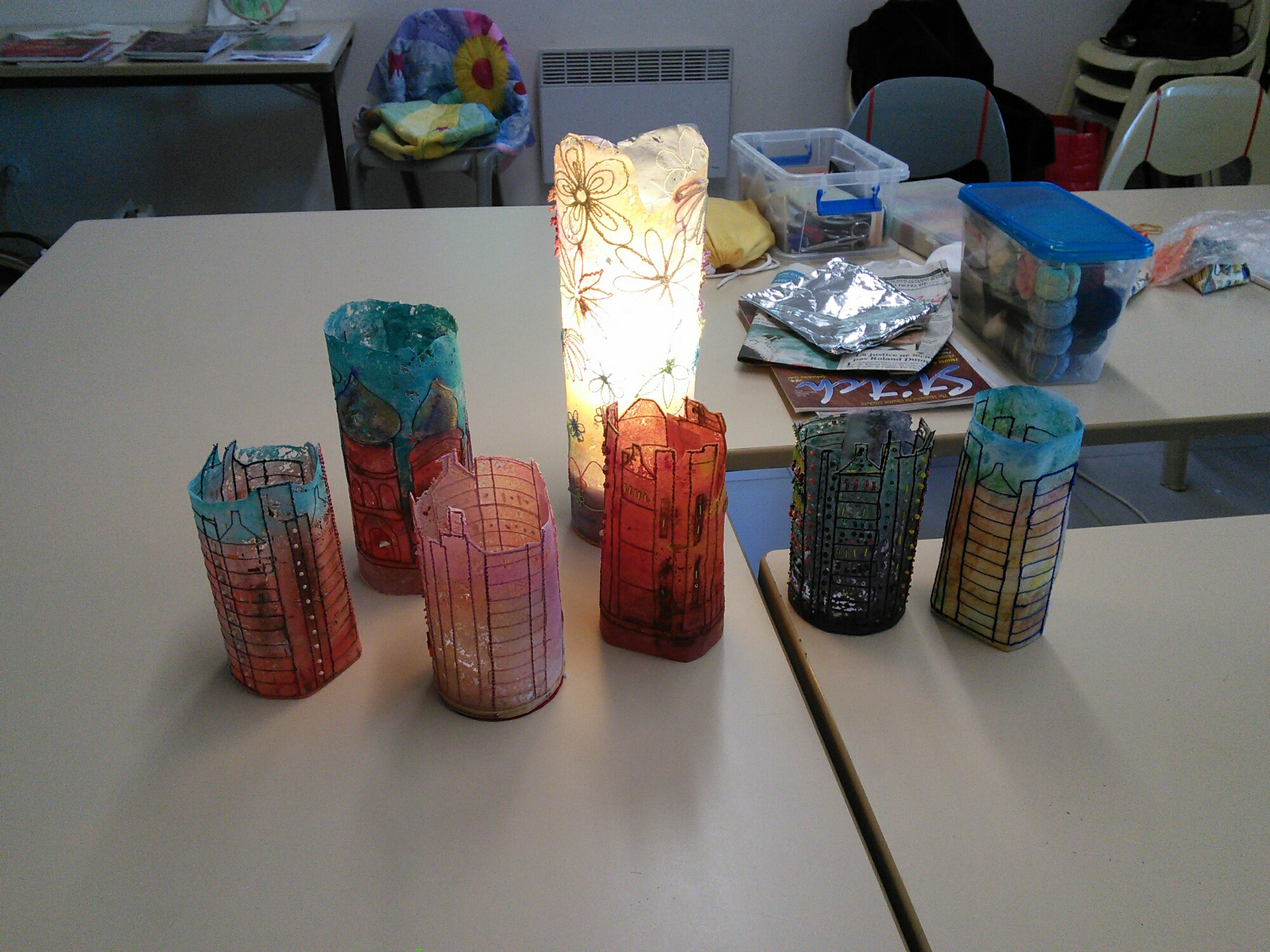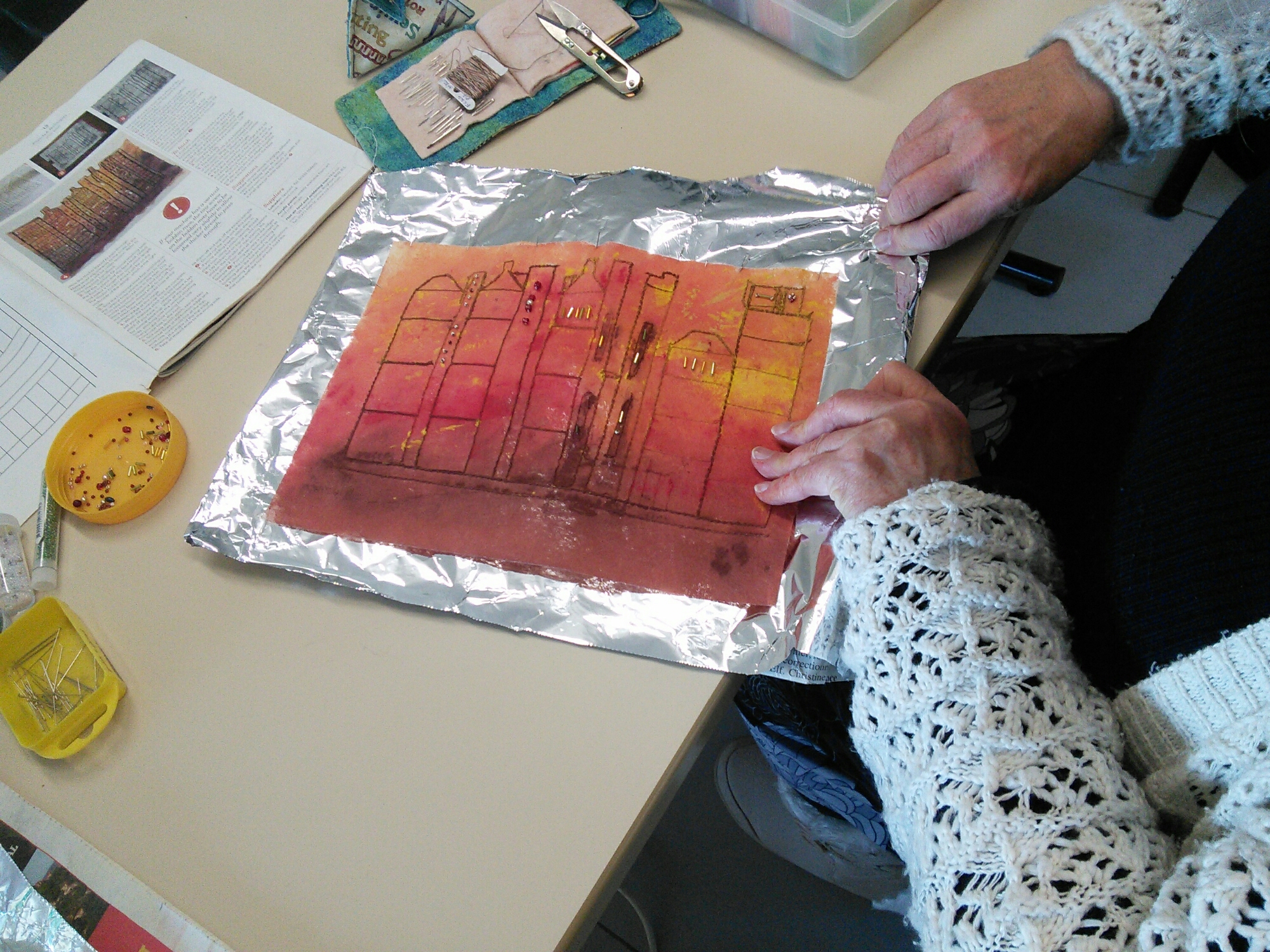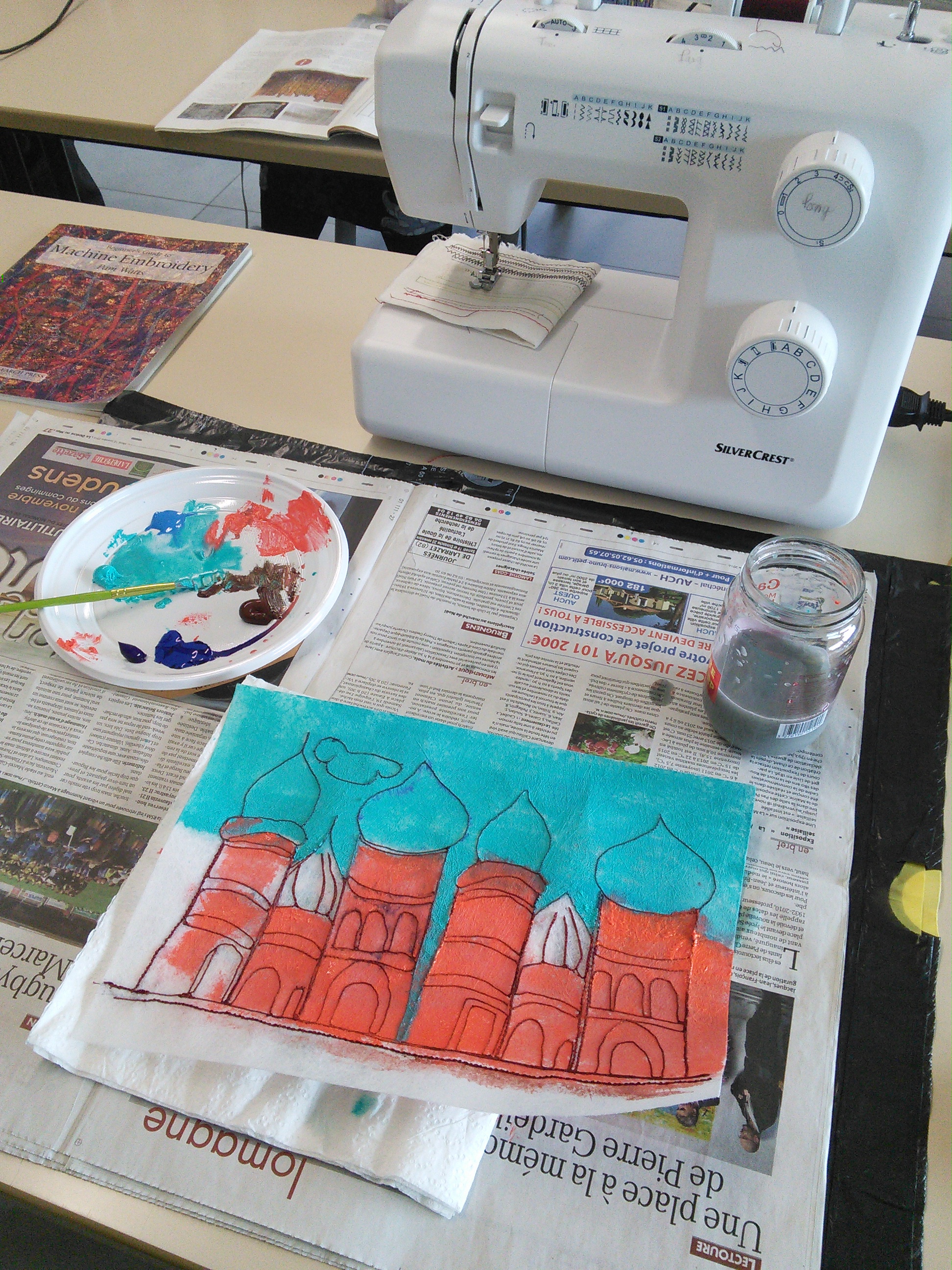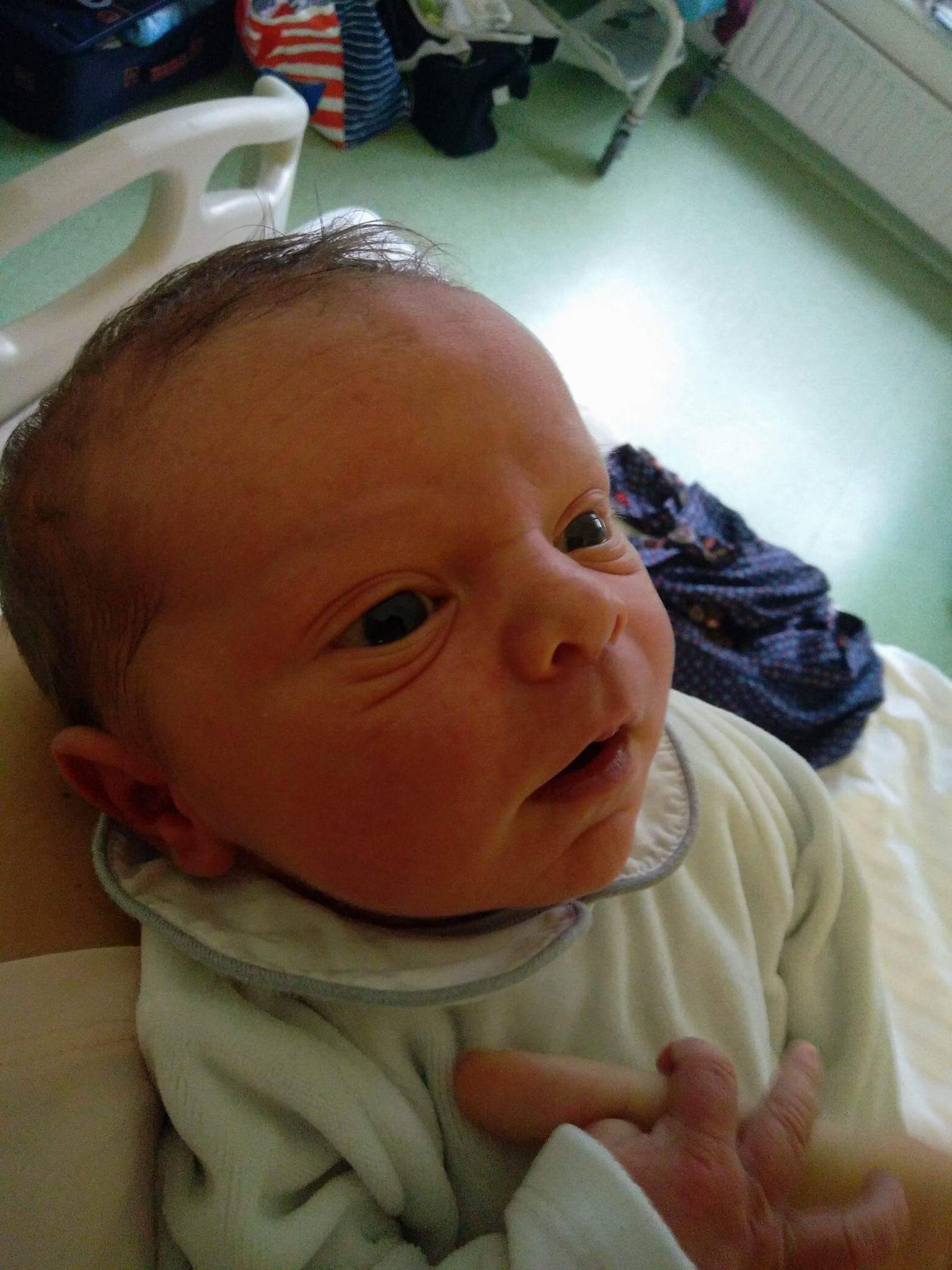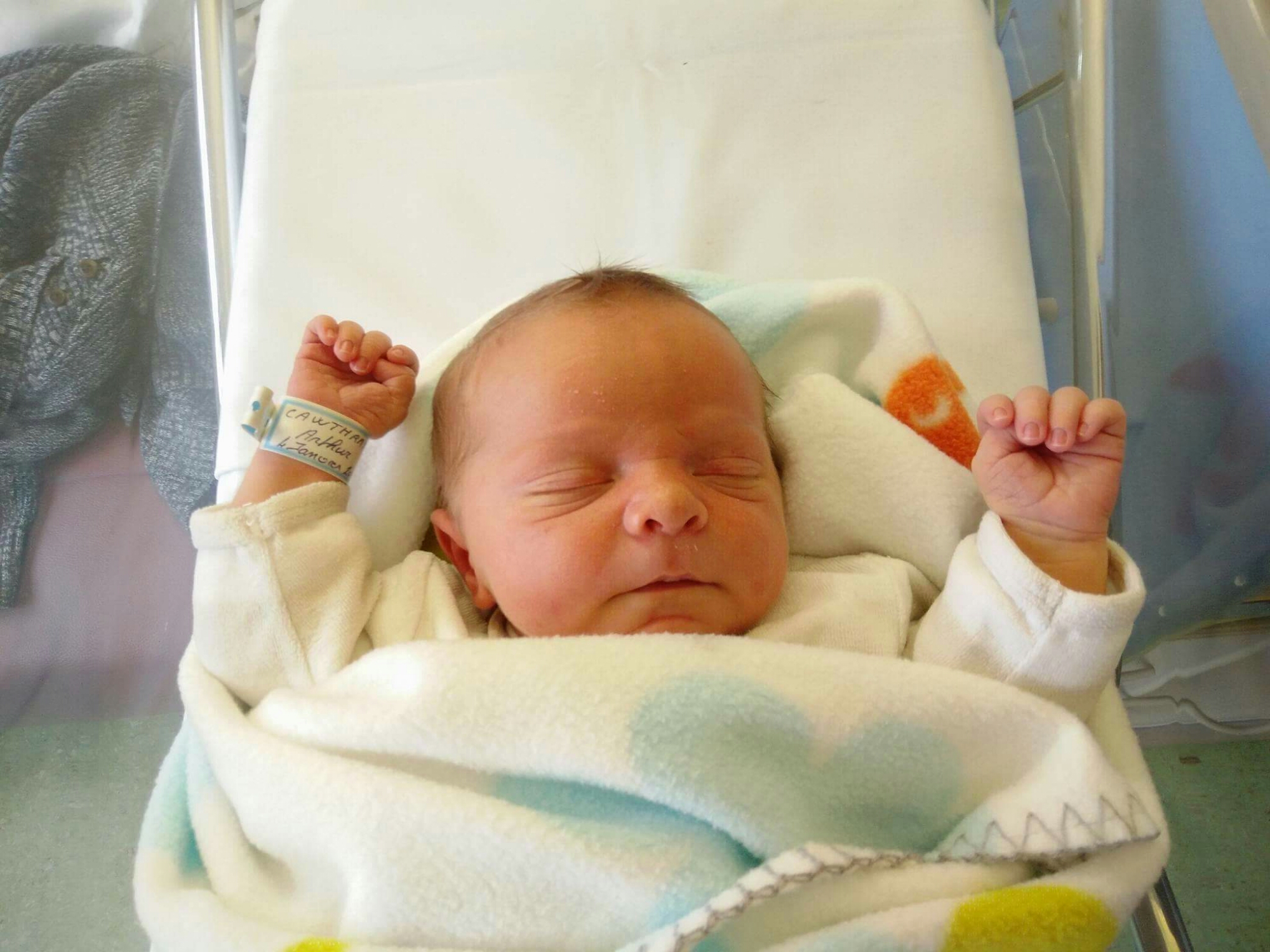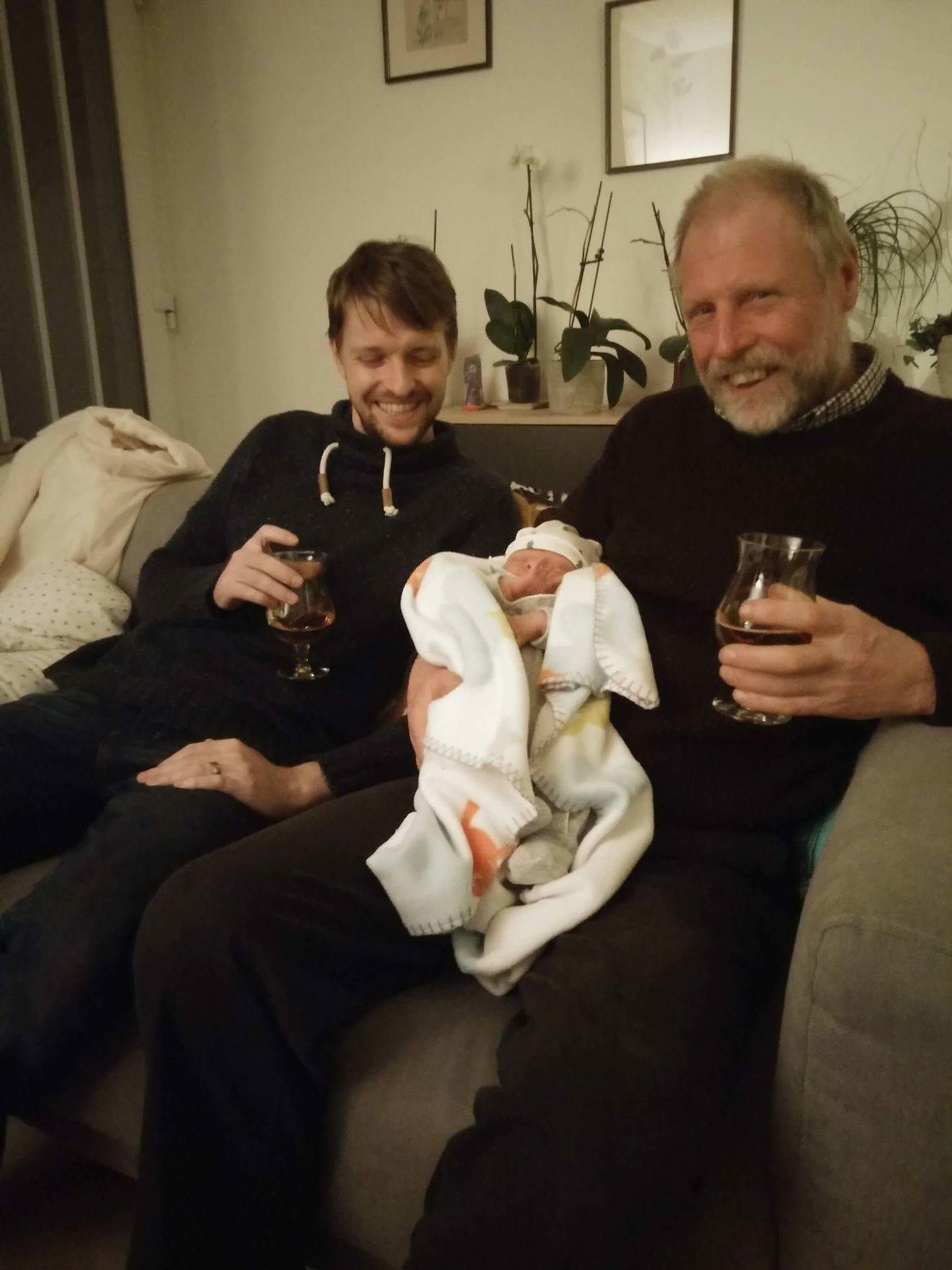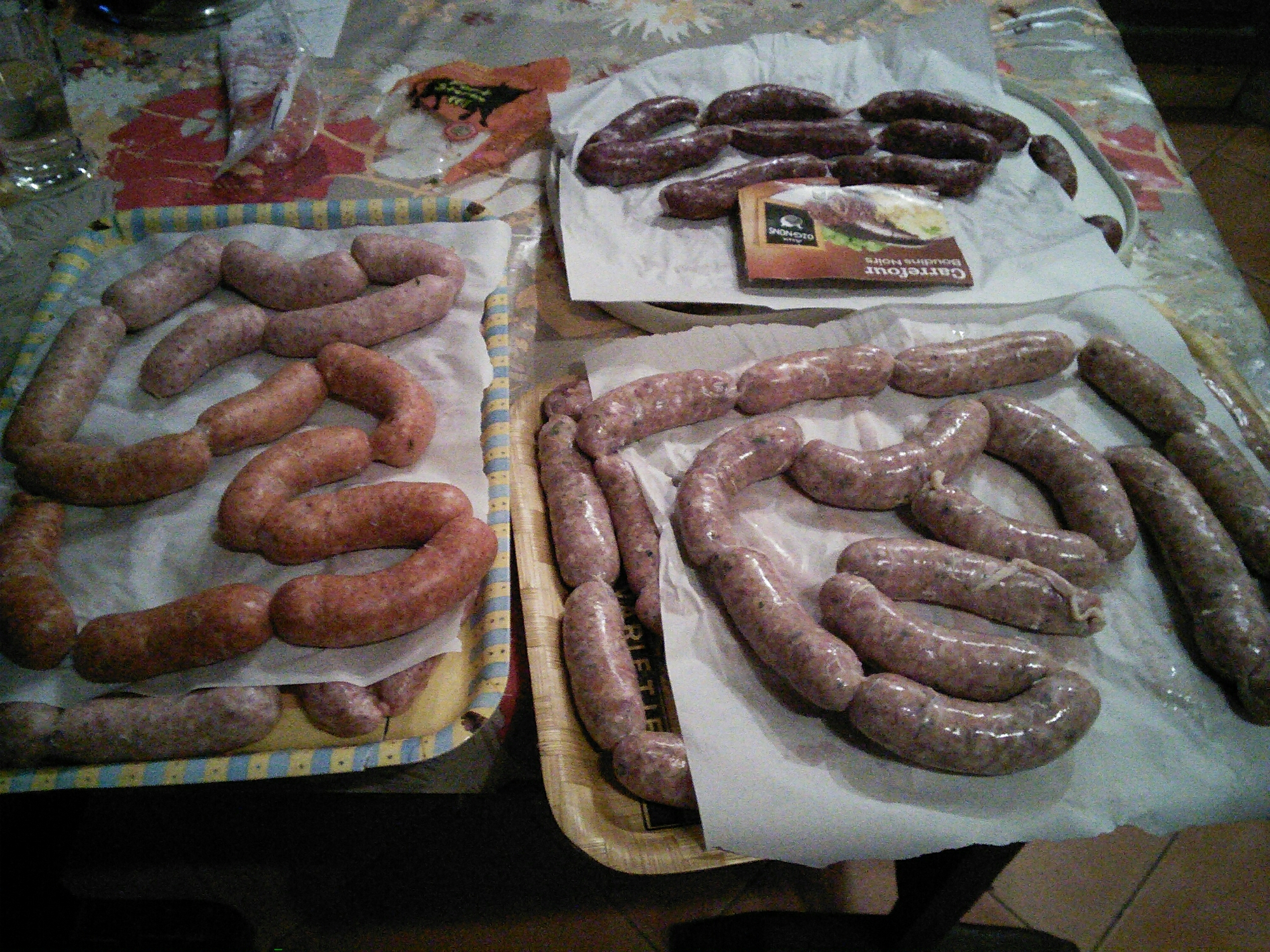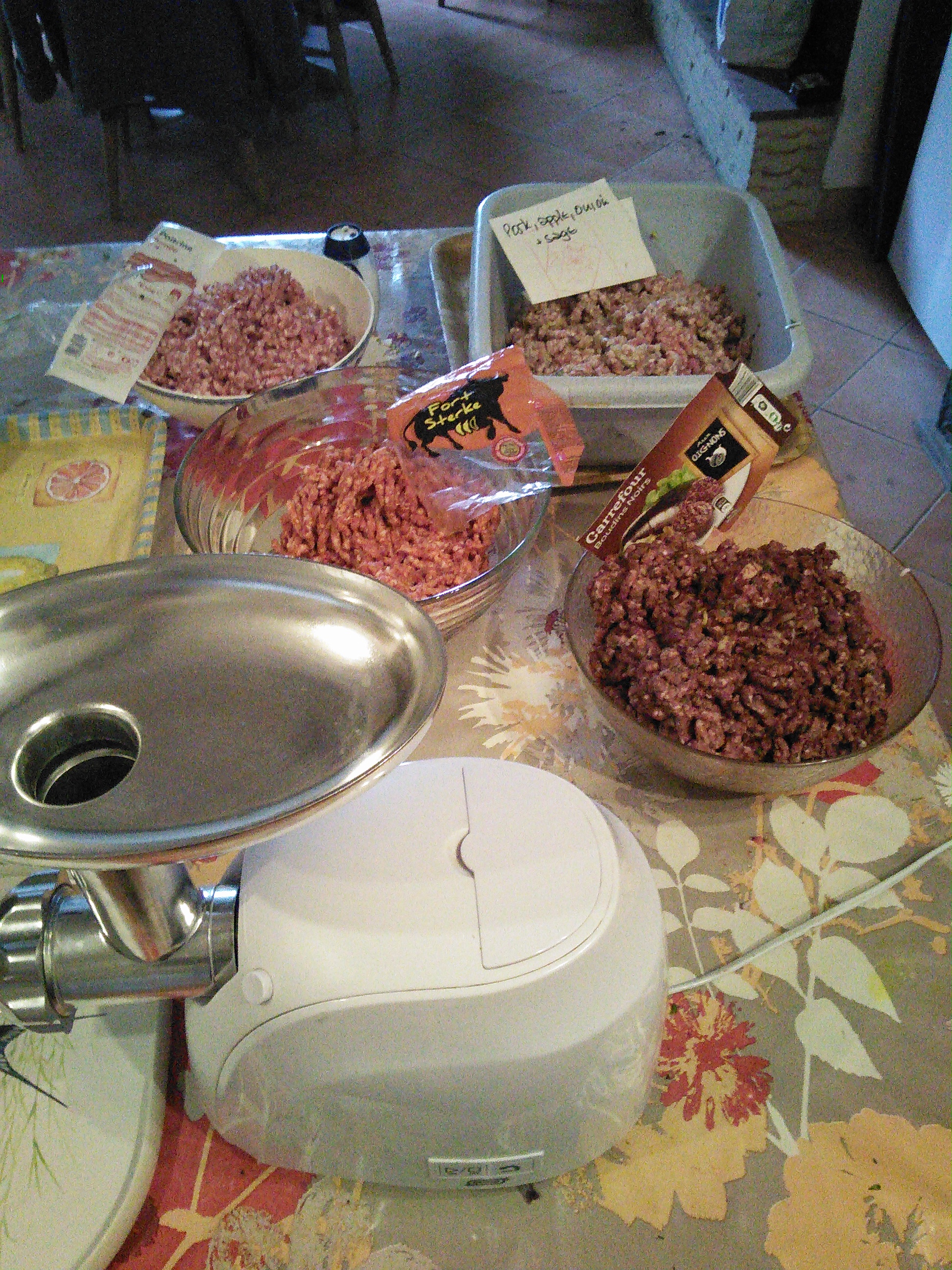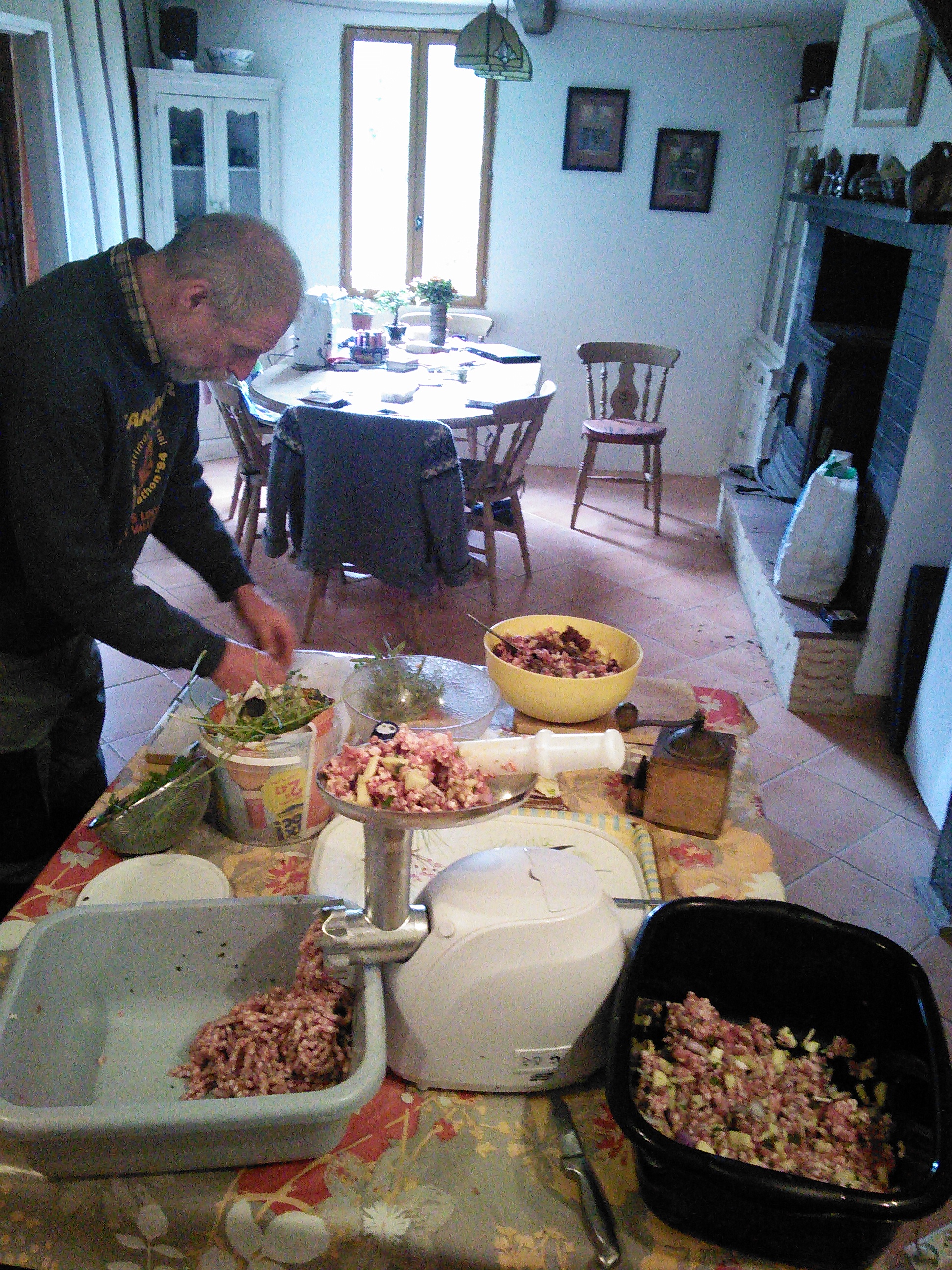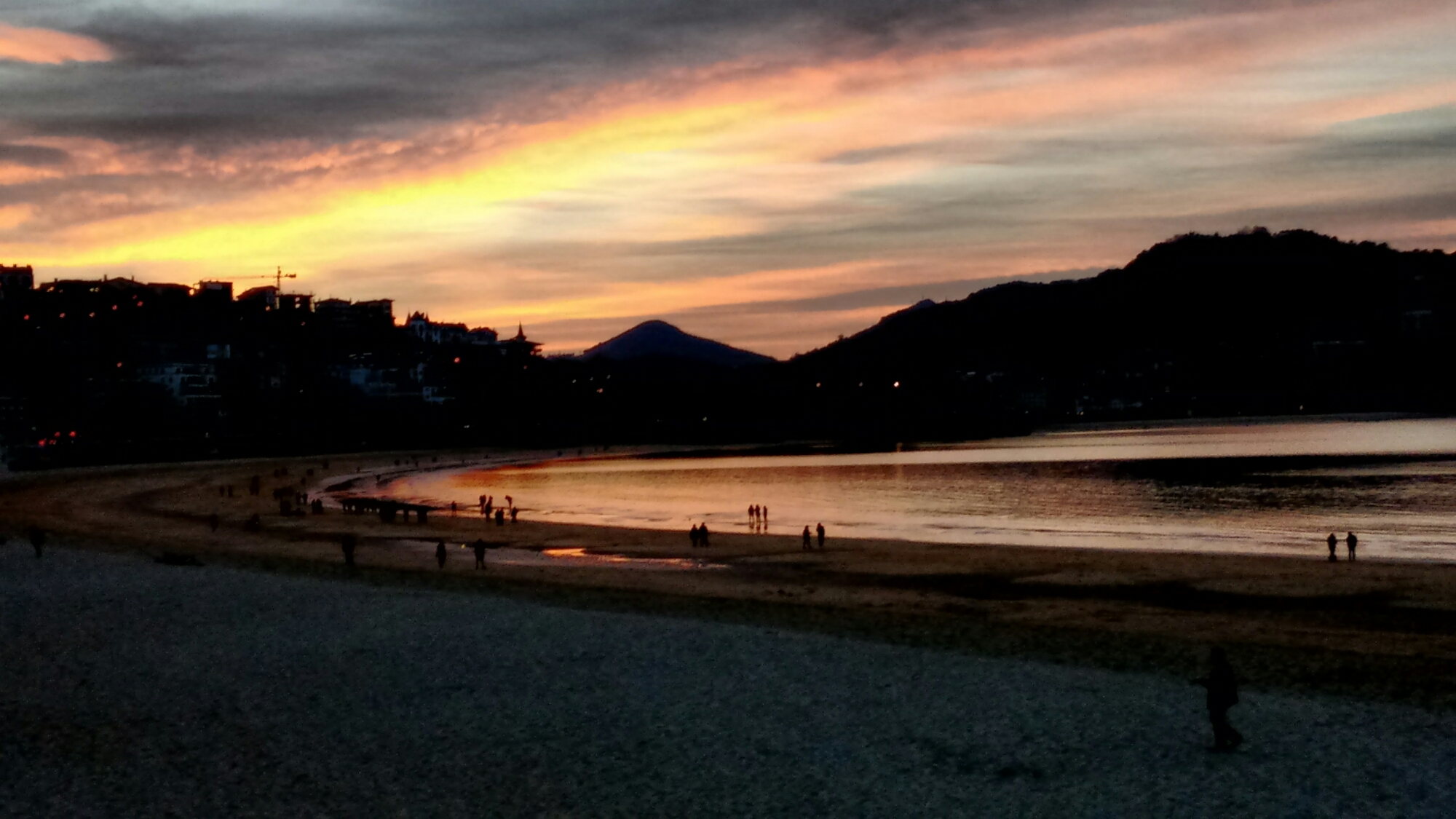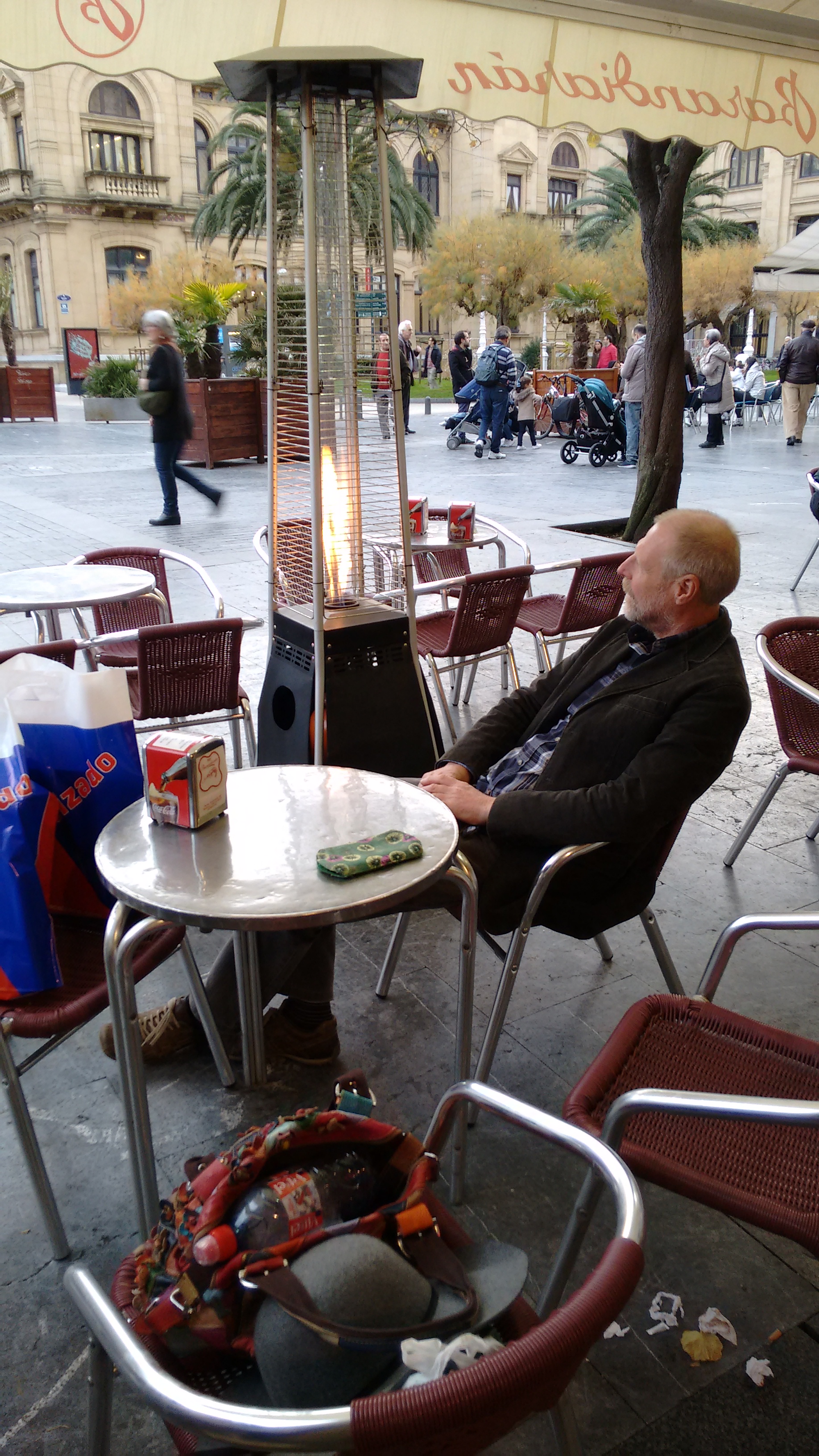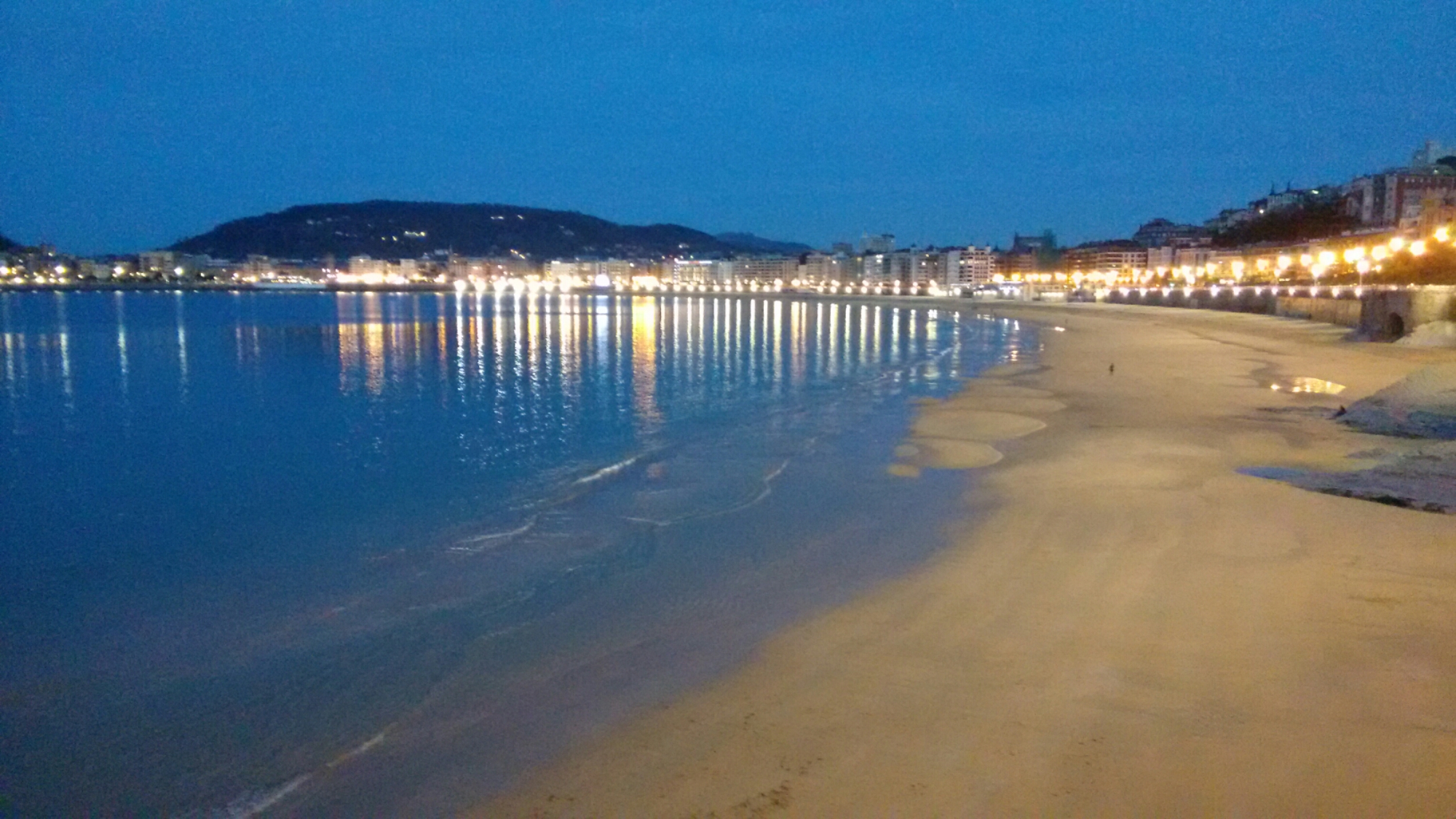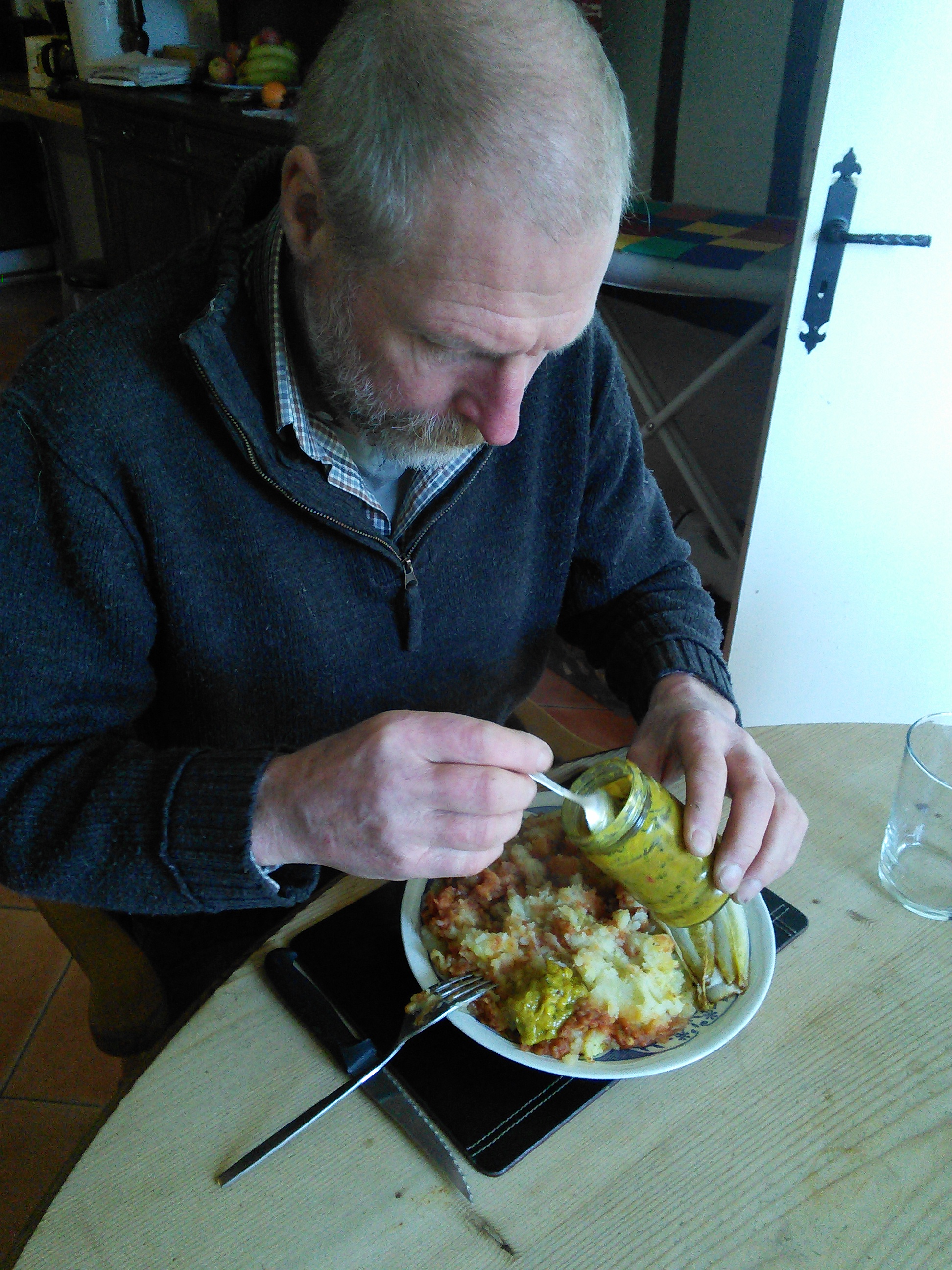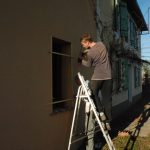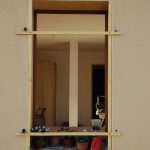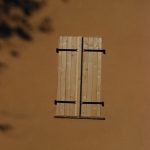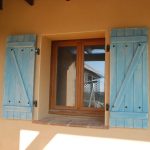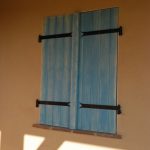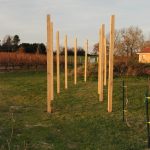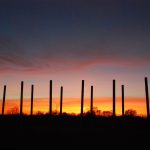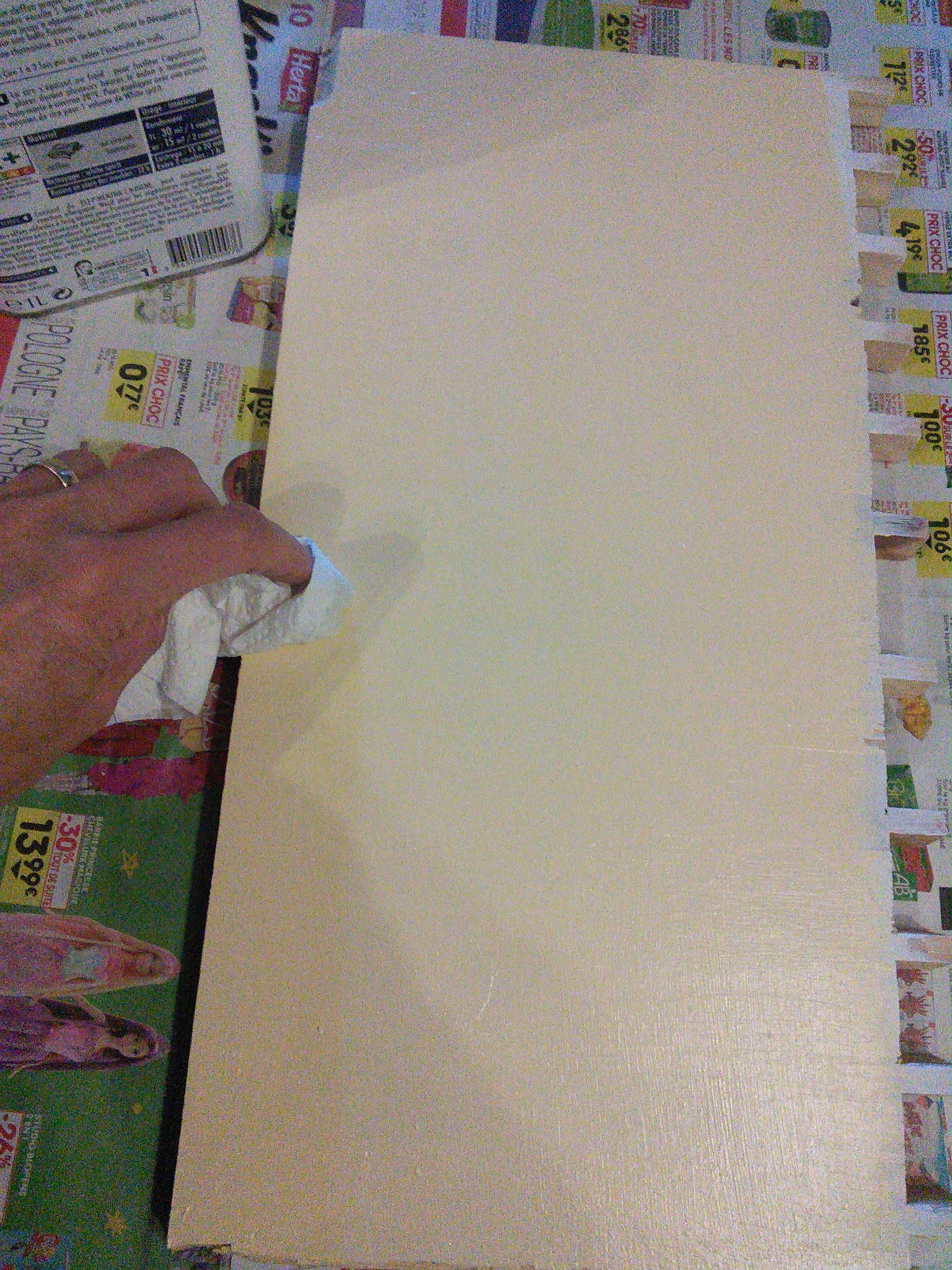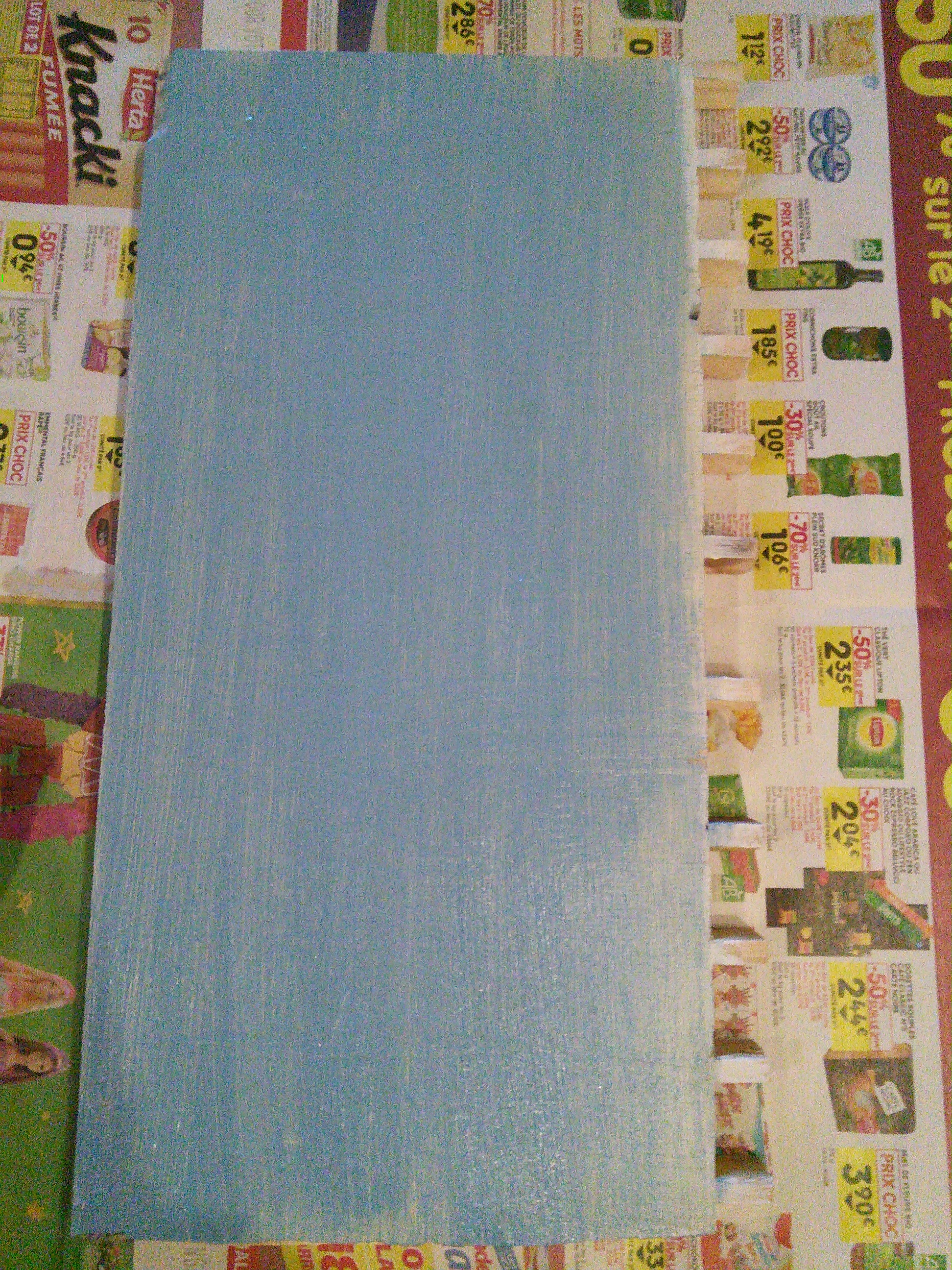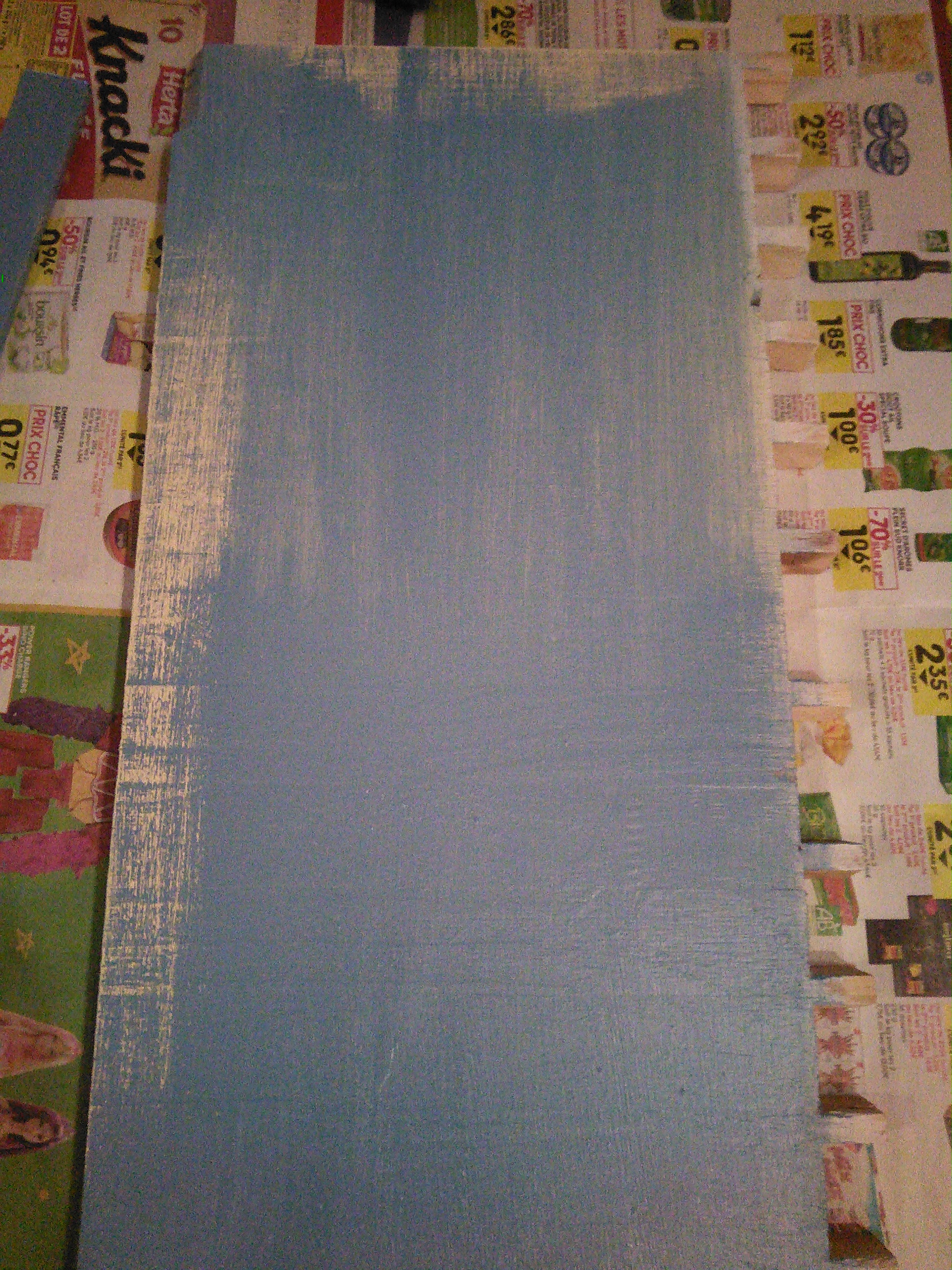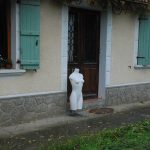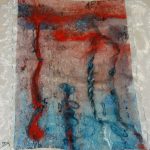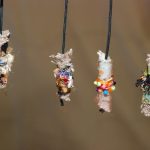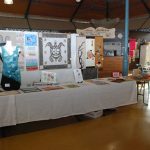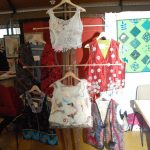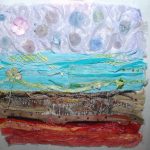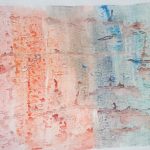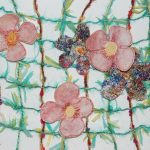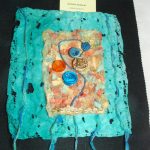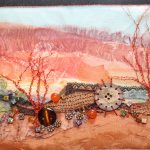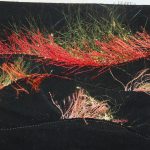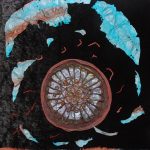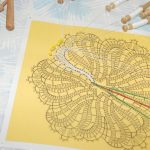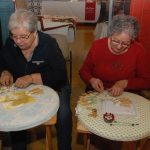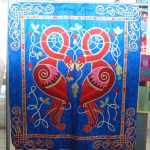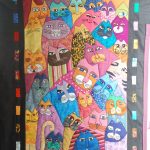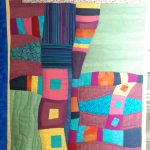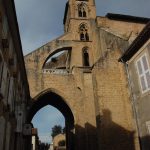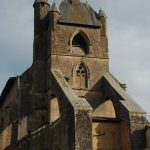We had a cold couple of weeks recently, with temperatures well below freezing at night and frequently not rising much during the day; but when the sun did show his face, temperatures soared, and some afternoons were gorgeous, warm enough, in fact, to work outside in a T-shirt. Nick took full advantage of this to finish the pergola, though I still need to treat the cross pieces of wood as soon as the weather has another good spell.
We called into a local garden centre and treated ourselves to some climbing plants to put against the posts and a few other things to go in the spaces in between; for now, it still looks bare, but once the plants get established it should begin to improve.
Today’s weather, by contrast, has been absolutely foul; howling winds and sheets of rain lashing even against the balcony doors, 3 metres in from the balcony edge. A day too revolting even for Nick to contemplate cycling.
He has, however, turned on the heating in the new house recently, which makes it so much more pleasant to work in there; no longer do I need to wear four sweaters and extra socks when painting – bliss! So today seemed an ideal opportunity to start clearing and cleaning, ready for the big move; yes, it seems as though it may actually happen one day!
We swept walls and floors, hoovered, cleaned out kitchen cupboards and drawers and removed masses of cobwebs and dead flies; then Nick was able to start bringing in some of the boxes that we packed in Harrogate five and a half years ago, which haven’t been opened since. What a voyage of discovery! Glasses and pottery, muffin tins and flan dishes, vases, jugs and teapots; it was like Christmas day, rediscovering things we’d entirely forgotten. But just like Christmas, whereas unwrapping some items was an absolute delight, others left us wondering why on earth we’d ever bought them, let alone gone to the trouble of wrapping them to bring with us.
I can’t believe how many ornaments and other bits of useless junk we’ve got; a once treasured brass kettle, a jug we bought in Pitlochry over 30 years ago, which neither of us now likes, “ugly mug” pottery drinking glasses and matching jug and a glass “lucky duck” that Kieran brought home from Whitby on his year 6 school trip, when he arrived home from the trip with presents for the whole family and more money than he’d taken. It turned out he’d charged his classmates to make their beds! Very enterprising! I really don’t want the place filled with clutter, so some things will be heading to Emaus later this week.
Amongst the loveliest of surprises was a little note scribbled on a sheet of kitchen roll and tucked into one of the boxes; “I love you and miss you already. Love Alex and Izzy”. So much has happened since those days of wrapping and packing, starting on the biggest adventure of our lives, less prepared than we believed for the challenges that lay ahead of us, but I wouldn’t change it for the world.
Nous avons eu quelques semaines froids récemment, avec des températures bien au-dessous de zéro la nuit et ne se levant pas beaucoup fréquemment pendant la journée; mais quand le soleil a montré son visage, les températures ont grimpé, et certains après-midi étaient magnifiques, assez chaud, en fait, à travailler à l’extérieur en T-shirt. Nick en a profité pleinement pour terminer la pergola, même si je dois encore traiter les traversées de bois dès que le temps a une autre bonne période.
Nous sommes allés à un pepinière local à acheter des plantes grimpantes pour mettre contre les poteaux et quelques autres choses pour aller dans les espaces entre; pour l’instant, il semble encore nue, mais une fois les plantes s’établiront, il commencera à améliorer.
Aujourd’hui, par contraste, il a fait horrible; du vent hurlants et des feuilles de pluie battante contre les portes du balcon même 3 mètres à partir du bord du balcon. Un jour trop révoltant même pour Nick à contempler faire du cyclisme.
Il a, cependant, allumé le chauffage dans la nouvelle maison récemment, ce qui le rend tellement plus agréable de travailler là-bas; pas plus que je dois porter quatre pulls et deux paires de chaussettes pour faire la peinture – le bonheur! Alors il semblait aujourd’hui une occasion parfaite pour commencer le nettoyage, prêt pour le grand déménagement; oui, il semble que ça va arriver un jour!
Nous avons balayés murs et carrelage, passé l’aspirateur partout, nettoyé les placards de la cuisine et les tiroirs et retiré des masses de toiles d’araignées et mouches mortes; Puis Nick était pret à commencer à apporter des boîtes que nous avons emballé à Harrogate il y a cinq ans et demi, qui n’ont pas été ouvert depuis. Quel voyage de découverte! Les verres et la poterie, des moules à muffins et des plats à quiche, des vases, des cruches et des théières; il était comme le jour de Noël, on a redécouvert des choses que nous avions complètement oublié. Mais tout comme Noël, déballant alors que certains articles était un vrai délice, d’autres nous ont laissé se demander pourquoi nous ayons jamais les avons achetés, et encore moins pris la peine de les envelopper d’apporter avec nous.
Je ne peux pas croire combien de décorations et d’autres morceaux de ferraille inutile que nous avons; un ex-précieux chaudron de cuivre, une cruche que nous avons acheté à Pitlochry il y a plus de 30 ans, que nous n’aimons plus, des verres de poterie à boire “tasse laid” et pichet correspondant et un verre “canard chanceux” que Kieran nous a offert apres un voyage à Whitby avec l’école, quand il est rentré avec des cadeaux pour toute la famille et plus d’argent qu’il avais pris. J’etait tres embaraesé a decourir qu’il avais chargé ses camarades de classe pour faire leurs lits pendant les vacances! Très entreprenant! Mais moi, je ne veux vraiment pas l’endroit rempli de toutes sortes de n’importe quoi, donc certaines choses se rendra à Emaus plus tard cette semaine.
Parmi la plus belle des surprises était une petite note griffonnée sur une feuille de rouleau de cuisine et niché dans l’une des cases; “Je vous aime et vous me manquez déjà. Bisous, Alex et Izzy”. Tant est arrivé depuis ces jours lointaines, des jours de conditionnement et d’emballage, à partir pour la plus grande aventure de notre vie, moins bien préparés que nous croyions pour relever les défis qui nous attendaient, mais je ne changerait rien pour tout le monde.

